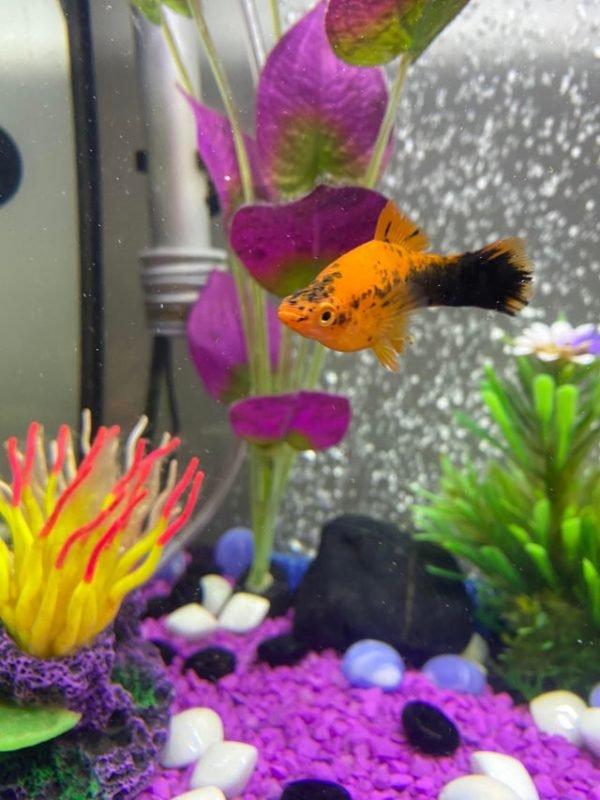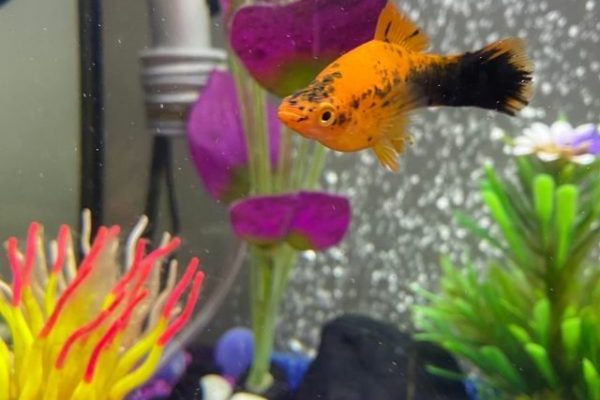
So, what makes swordtails special? Aside from their striking appearance, they’re pretty hardy and easy to care for, making them perfect for beginners. If you’re wondering how to set up the perfect environment, feed them well, and keep them healthy, you’re in the right spot. Let’s dive into the essentials of swordtail care, step by step.
Choosing the Right Aquarium
First things first, you need to pick the right aquarium for your swordtails. These fish need space to swim and explore, so a tank of at least 20 gallons is ideal. Why 20 gallons? Well, it provides a balanced environment with enough room for them to flourish.
When you set up your aquarium, consider adding plants and hiding spots. Swordtails love to play and will appreciate having places to explore. Floating plants can also help diffuse light and make your tank feel more natural. Just think of it as creating a little underwater world for them.
It’s also worth mentioning that swordtails are social fish. Having a small group (at least 3-4) can help reduce stress and encourage natural behaviors, like swimming and foraging together.
Water Quality and Conditions
Maintaining good water quality is crucial for your swordtail’s health. These fish thrive in slightly alkaline water, with a pH level between 7.0 and 8.0. It might sound technical, but think of it as making sure your fish have the right balance of “home” in their aquarium.
Test your water regularly using an aquarium test kit. You should check for ammonia, nitrites, and nitrates. Ideally, ammonia and nitrites should be at 0 ppm, while nitrates should stay under 40 ppm. Regular water changes (about 20-25% weekly) help keep these levels in check, so don’t skip this part.
Also, pay attention to the temperature. Swordtails prefer warmer waters, around 72°F to 82°F. A reliable heater can help maintain a consistent temperature, which is key for their overall health. Just imagine plopping yourself into a cold pool—it’s not a pleasant experience, right? Your fish feel the same way!
Feeding Your Swordtails
Feeding is an exciting part of fishkeeping! Swordtails are omnivores, meaning they enjoy a variety of foods. You can feed them high-quality flakes, pellets, or frozen foods like brine shrimp. Here’s the thing: variety keeps them healthy and prevents boredom.
Consider incorporating:
- Flake food as a staple
- Frozen or freeze-dried foods for a treat
- Vegetables like blanched spinach or peas for fiber
Aim to feed them small amounts 2-3 times a day. Remember, it’s better to underfeed than overfeed. Overfeeding can lead to poor water quality and health issues. Like us, swordtails prefer to snack, not to feast.
Tank Mates for Swordtails
Wondering who your swordtails can hang out with? Well, they’re generally peaceful fish but can be a bit nippy if they feel threatened. So, choose tank mates wisely. Compatible fish include guppies, platies, and other calm community fish.
Here’s a quick list of good tank mates:
- Guppies
- Platies
- Neon Tetras
- Corydoras Catfish
Avoid aggressive species like bettas or large cichlids. Introducing them to a mixed community can create a dynamic and lively aquarium. It’s like throwing a party—everyone should get along!
Breeding Swordtails
If you’re feeling adventurous, you might find yourself interested in breeding swordtails. These fish are livebearers, which means they give birth to live fry instead of laying eggs. It’s a fascinating process!
To encourage breeding, ensure the conditions are right: good water quality, a balanced diet, and a spacious tank. When the female swordtail is ready, she’ll give birth to up to 50 fry at a time!
After they’re born, it’s best to move the fry to a separate tank to protect them from adults, as they might see the little ones as snacks. It’s like having a baby! You want to keep them safe and sound until they’re ready to explore on their own.
Common Swordtail Health Issues
Just like any pet, swordtails can face health challenges. The key is to be observant. Common issues include fin rot, ich, and swim bladder disorders.
If you notice any unusual behaviors, like rubbing against surfaces or clamping fins, it’s time to investigate. Here’s a quick guide to spotting and treating common health issues:
- Fin rot: Usually caused by poor water quality. Treat with antibacterial medication and improve tank conditions.
- Ich: Look for white spots on their body. Raise the tank temperature and add salt to the water as a treatment.
- Swim bladder disorder: If your fish struggles to swim properly, try adjusting their diet or check for constipation.
Regular maintenance and observations can help catch these issues early, ensuring a happy and healthy life for your swordtails.
Creating a Balanced Environment
Finally, creating a balanced environment is key to swordtail success. Regular aquarium maintenance isn’t just about cleaning; it’s about creating harmony in your aquatic world.
Make a routine for water changes, monitor temperatures, and always be on the lookout for signs of stress or disease. You might think of your aquarium as a mini-ecosystem—it needs balance to thrive.
Consider adding equipment like a good filter and air pump to keep the water clean and oxygen-rich. Plants can also improve water quality and provide shelter for your fish. Just imagine living in a beautifully decorated room—it makes a difference!
In closing, caring for swordtails doesn’t have to be overwhelming. With the right setup, attention to water quality, and a little knowledge about their behavior, you can create a thriving environment for these vibrant fish. Happy fishkeeping!

